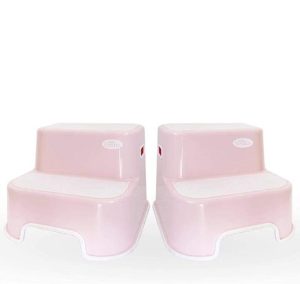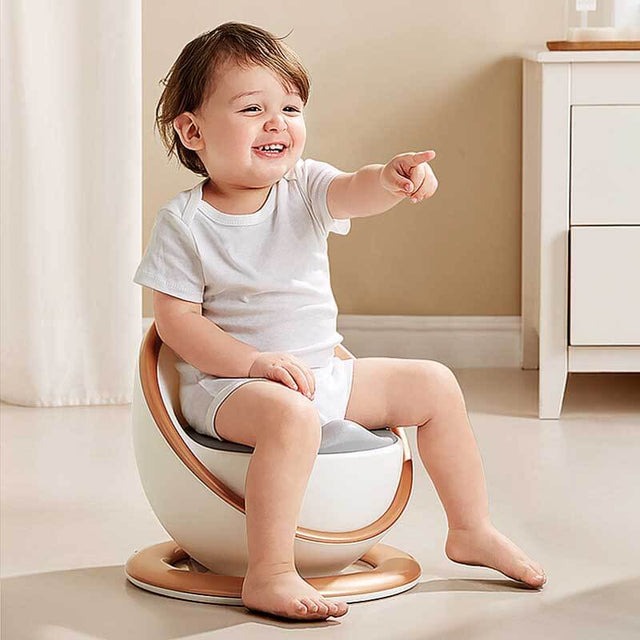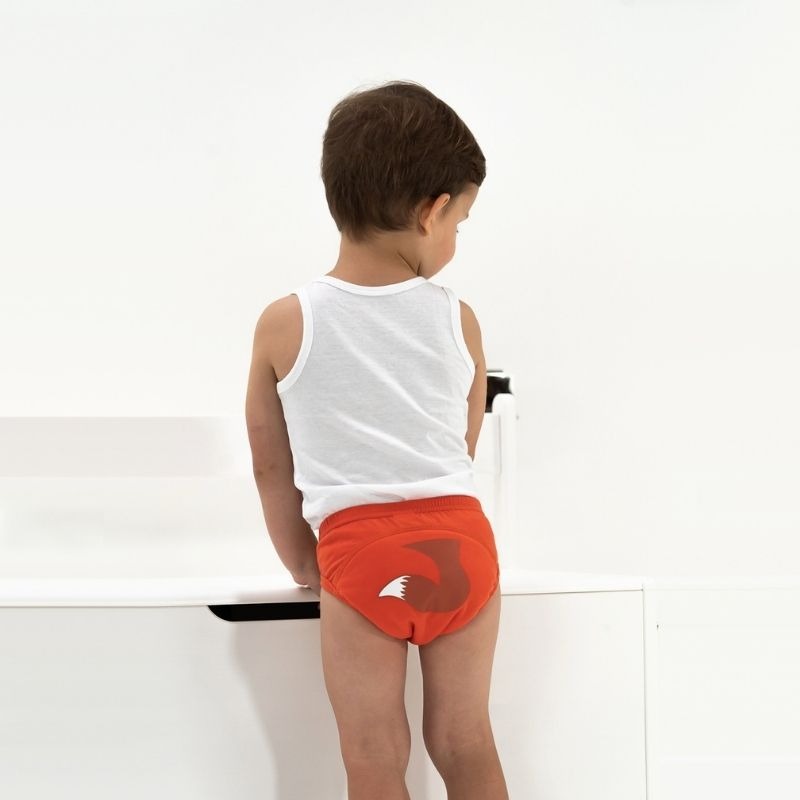Potty training is a significant milestone in a child’s development. It marks a step towards independence and self-care. Every child is unique, and their potty training journey will unfold at their own pace. This article explores the different stages of potty training, offering tips and tricks to support your child along the way.
Signs of Readiness
Before embarking on potty training, it’s important to recognize if your child shows signs of readiness. Here are some indicators:
Physical development:
Your child can pull their pants up and down independently. They may also start staying dry for longer stretches during the day.
Interest in the toilet:
Your child shows curiosity about the toilet and how adults use it. They may mimic your bathroom behavior or ask questions about using the potty.
Expressing discomfort:
Your child may start expressing discomfort in a full diaper or wet pants. This shows they are becoming aware of their bodily functions.
Remember: These are just general signs. Don’t pressure your child to start potty training if they are not showing any interest or seem resistant.

The Stages of Potty Training
Potty training typically happens in stages. Here’s a breakdown of what you can expect:
-
Stage 1: Introduction: This stage focuses on familiarizing your child with the potty. Let them see you using the toilet and encourage them to sit on a child-sized potty when they feel comfortable.
-
Stage 2: Underwear Exploration: Introduce potty training underwear. Accidents will happen, but these underwear help your child feel the wetness and start associating it with using the potty.
-
Stage 3: Potty Attempts: Your child will begin attempting to use the potty. Offer frequent potty breaks and praise them for their efforts, even if there are no accidents.
-
Stage 4: Nighttime Training: Nighttime dryness comes later than daytime control. Pull-up diapers are a good option for nighttime wear at this stage.
-
Stage 5: Mastery: Your child is mostly accident-free during the day and may even start staying dry at night. Celebrate this achievement, but be patient with occasional setbacks.

Tips for Each Stage
Here are some practical tips to support your child at each stage of potty training:
-
Stage 1: Make potty time fun with colorful potty chairs and picture books about using the potty.
-
Stage 2: Choose comfortable potty training underwear with fun patterns or characters.
-
Stage 3: Create a potty schedule with frequent breaks, and offer potty time after waking up, naptime, and meals.
-
Stage 4: Limit fluids before bedtime and avoid sugary drinks in the evening.
-
Stage 5: Reward progress with stickers, praise, or small treats.
Patience is Key
Potty training can be a messy and frustrating process at times. Remember, patience and positive reinforcement are key. Here are some additional reminders:
-
Avoid Punishment: Accidents are a normal part of potty training. Punishment can make your child anxious and hinder progress.
-
Stay Consistent: Maintain a consistent routine and approach to potty training. This helps your child feel secure and understand expectations.
-
Celebrate Small Wins: Acknowledge and celebrate your child’s efforts, even if they don’t always make it to the potty on time.
-
Take Breaks: If your child seems overwhelmed or resistant, take a break from potty training for a few weeks and try again later.
Potty training is a journey, not a race. By understanding the stages of potty training, using these tips, and staying patient, you can support your child as they gain independence and mastery over their toileting needs.

Building Confidence: Potty Training Activities for Each Stage
Potty training is a journey of development and learning for your child. Here are some engaging activities you can incorporate at each stage to make it a fun and positive experience:
Introduction
-
Read Aloud: Find children’s books about using the potty. Look for stories with colorful illustrations and positive messages about potty time.
-
Pretend Play: Encourage pretend play with dolls or stuffed animals using a child-sized potty. This helps your child become familiar with the concept of using the potty.
-
Sing Songs: Make up silly songs about using the potty or sing familiar tunes with modified lyrics about potty time.
Underwear Exploration
-
Sticker Chart: Create a sticker chart together. Add stickers for each time your child sits on the potty, regardless of accidents. This rewards effort and celebrates progress.
-
Potty Games: Play simple games while sitting on the potty, like singing the alphabet song or looking at a picture book. Keep the focus on making potty time enjoyable, not on elimination.
-
Practice Routine: Involve your child in choosing comfy potty training underwear with their favorite characters or colors. This can help them feel more excited about wearing them.

Potty Attempts
-
Potty Time Adventures: Set a timer for short potty breaks throughout the day. Turn potty time into an adventure by singing a song or reading a short story together during these breaks.
-
Positive Reinforcement: Offer enthusiastic praise and hugs for using the potty successfully, even for small amounts. This positive reinforcement encourages your child to continue using the potty.
-
Fluid Intake: Offer plenty of fluids throughout the day and encourage frequent potty breaks, especially after waking up, naptime, meals, and drinks.
Remember: These are just a few ideas to get you started. The most important thing is to create a relaxed and positive atmosphere around potty training.
Troubleshooting Tips
Here are some tips for managing regression and keeping potty training on track:
Maintain Consistency:
As much as possible, stick to your established potty schedule and routines. This provides comfort and security for your child.
Open Communication:
Talk to your child about potty training in a calm and reassuring way. Answer their questions honestly and address any anxieties they may have.
Positive Reinforcement:
Continue to praise your child’s efforts, even during setbacks. Positive reinforcement motivates your child to keep trying.
Reduce Potty Pressure:
If your child seems overwhelmed, take a break from intensive potty training for a short while. You can always revisit it later.
The Importance of Teamwork
Potty training is a collaborative effort between you and your child. Here are some ways to foster teamwork:
-
Offer Choices: Give your child some control over the potty training process. Let them choose their potty training underwear or a reward chart they like.
-
Make it Fun: Sing songs, read stories, or play simple games while on the potty. Keep the atmosphere light and enjoyable.
-
Celebrate Milestones: Acknowledge and celebrate your child’s progress, big or small. This helps them feel proud of their accomplishments.
By understanding the stages of potty training, using these tips, and staying patient, you can support your child on their journey to becoming potty independent. Remember, every child develops at their own pace. Focus on creating a positive and supportive environment that empowers your child to learn and grow.






